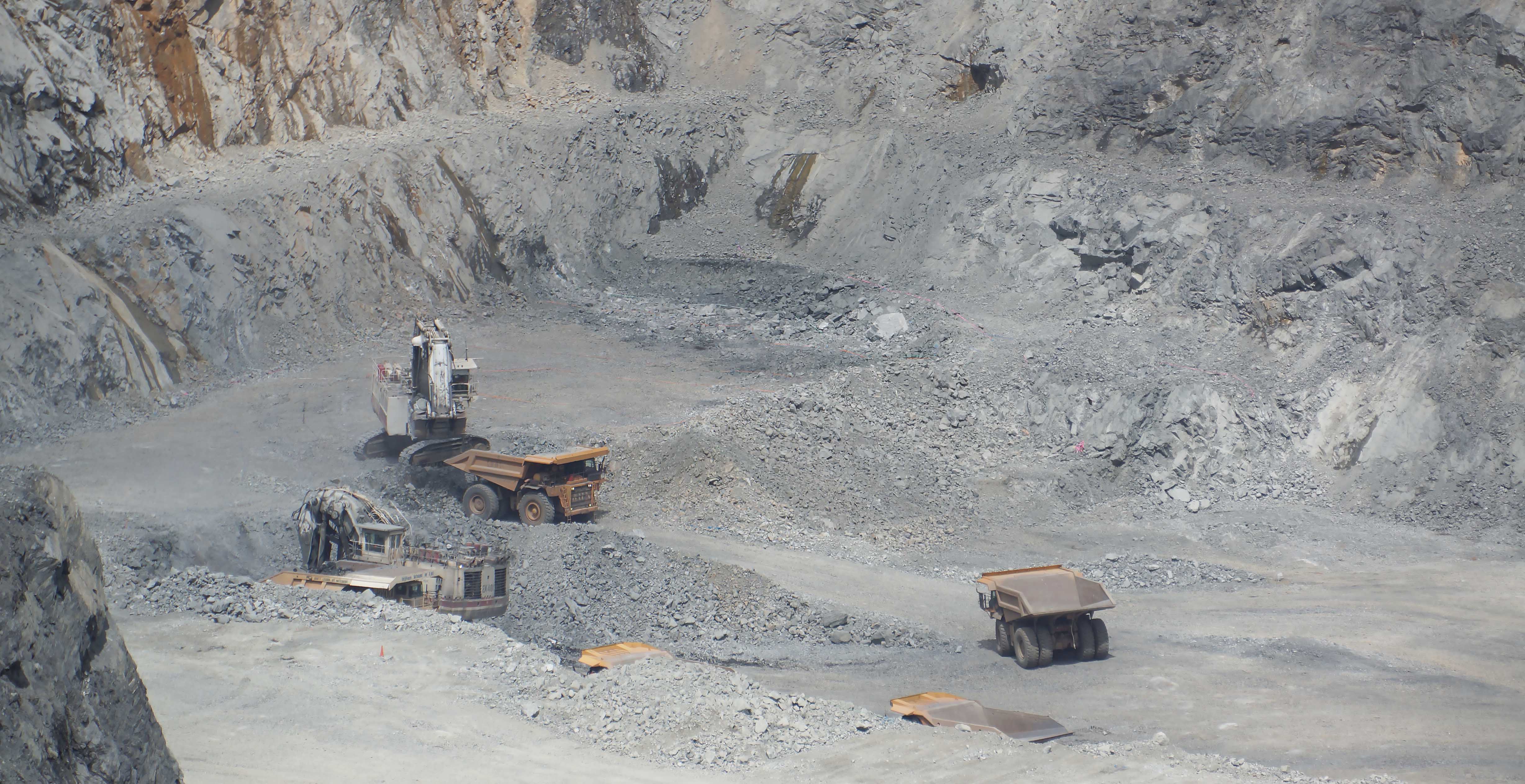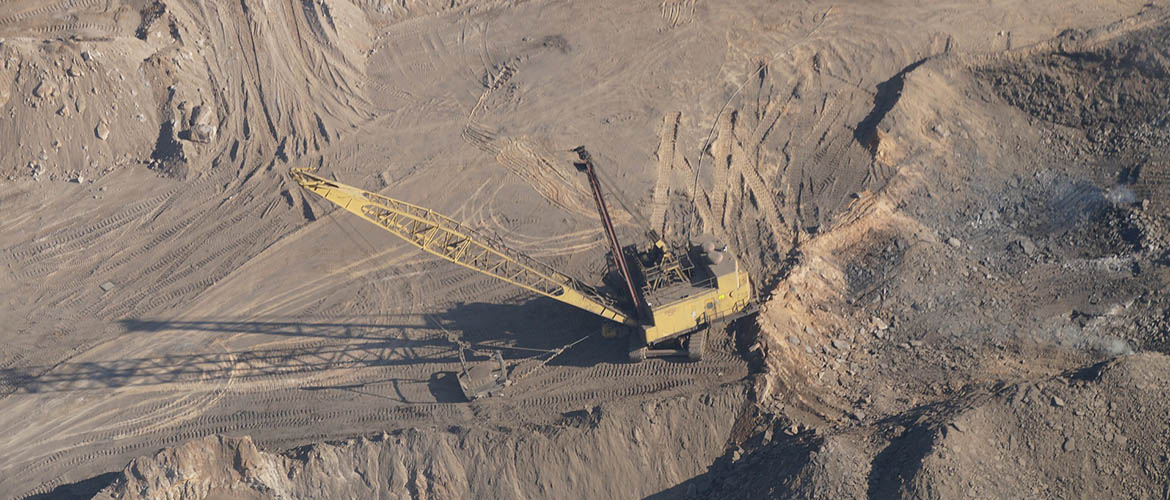CHAPTER 2: AN INTRODUCTION TO MINING
This chapter covers mining and mining processes, machinery and methods used and how ore and waste rock travel within the mine complex.
Mining projects generally involves extracting minerals from the ground and separating different minerals from each other. Extraction is typically carried out in an open pit or an underground mine while separating minerals takes place in a processing plant. An important element of mining, that is given more attention and importance now, is the types of mine waste are produced, how much and how is it managed in short and long term. A mining process is often done in several steps. At first, material from the ground is extracted, and ore minerals are liberated, separated, and concentrated. The nature of these steps differs depending on composition, hardness and texture of the rock, geometry and location of ore, local environment, legal and economic requirements, and other considerations. A general explanation of these steps and their different methods is given in this chapter.
Mining
In the beginning of a mining project the area must first be cleared of topsoil to reach the bedrock. This material is called overburden, and stripping is done to remove it. The soil can be used within the mine, for example to construct roads or other infrastructure. In some mines also the overburden is part of the mineral resource.
Explosives are used to break and fragment the ore and waste rock. Shallow holes are drilled and filled with explosives blasting the rock to pieces. This is called drilling and blasting. The blasted rock is collected by excavators and commonly transported by trucks. Soft rocks, overburden or other soft materials can be liberated and excavated without drilling and blasting. Sometimes with continuous mining equipment or rarely also with hydraulic methods (high pressure water).
To reach the ore, the surrounding rock with lower concentration of valuable minerals must be removed. This rock is called waste rock. The waste rock is transported out of the mine and is deposited in piles or heaps.
The amount of waste rock produced relative to the amount of ore produced is called the stripping ratio. For example, a stripping ratio of 2:1 means that 2 tonnes of waste rock need to be mined to mine 1 tonne of ore. The stripping ratio depends on several things, such as the depth and geometry of the ore body, the mining method that is used and the composition and stability of the rock.

To the processing plant
Ore is transported by trucks or a conveyor belt to a processing plant often located within the mining area. In a processing plant, valuable minerals are liberated, separated and concentrated to a product for sale and further refining. The product can be a concentrate with one or more valuable minerals, the product can also be metal plates from electrowinning or metal from a smelter.
The ore sent to the processing plant is made up of ore minerals, the valuable minerals, and of gangue minerals, all the other minerals. Ore minerals and gangue minerals are separated in the processing plant. Ore minerals becomes the product, gangue minerals are transferred as tailings to a tailings storage facility. Tailings is together with waste rock the two most important types of mine waste. Gangue minerals are generally the largest part of the ore body.
Crushing and milling
Mineral processing usually requires reducing the particle size of the ore, a process called comminution followed by separating ore and gangue minerals and concentrating ore minerals. The mined ore is tipped into a crusher crushing the blasted rock from the mine to smaller pieces, usually the of small stones or gravel. This material is then transported to a mill to further reduce the material´s particle size, producing a fine sand or powder. A common method to mill the crushed rock is milling in large rotating drums with metal balls, grinding the rock to small particles and liberating ore and gangue minerals from each other. Milling is one of the most energy intensive steps in mining, accounting for most of the energy consumption at a mine.
Separation and concentration
There are four important methods to separate ore and gangue minerals and to concentrate ore minerals:
Magnetic separation is used to separate magnetic minerals from non-magnetic minerals using large rotating magnets. Magnetic separation can remove magnetic gangue minerals or in the case of iron ore mining to separate the magnetic ore mineral into a concentrate of magnetite (Fe3O4)
Gravity separation uses density differences to separate heavier minerals from lighter. Gold panning is a method of gravity separation, where gravel and sand from a river is shaken and rinsed in a pan removing light particles while the heavy gold sinks to the bottom of the pan. In a large processing plant gravity separation takes place in cyclones, spirals and on shaking tables using water and sometimes chemicals in the process.
Flotation is a common technique to separate sulphide minerals from other minerals in a series of flotation tanks. Many metals occur in sulphide minerals. Flotation separates hydrophobic materials (repelled by water) and hydrophilic materials (attracted by water) from each other. The separation is enhanced by adding chemical reagents to water, surfactants and wetting agents, making some minerals stick to air bubbles in the flotation tanks. Air is pumped into the flotation tanks making a froth of air bubbles and mineral concentrate.
Chemical leaching uses acid, alkaline or cyanide solutions to dissolve minerals. Acid leach of oxide minerals in tanks or on large piles of crushed rock (heap leach), cyanide leach of gold ore and alkaline leach of uranium are common variants of chemical leaching. In heap leaching, an acid, alkaline or cyanide solution is sprinkled on large piles of ore, the solution percolates through the pile dissolving ore minerals and gangue minerals. The acid solution (pregnant solution or pregnant liquor) is collected at the base of the heap and transferred to a process recovering metals in solution. The barren solution after removal of the wanted metals are recycled to the leach circuit. Leaching in tanks can process smaller volumes of ore while high pressure leach is a method utilising high pressure and heat to accelerate mineral dissolution. The product of chemical leaching can be a precipitate or sludge for further refining or metal plates from an electrowinning plant. The electrowinning plant extracts metals out of the solution by electrolysis. Waste from chemical leaching can be leach pads, slimes, sludges and tailings containing gangue minerals, residual and secondary minerals and residual cyanide or other reagents. The term bio-leach is used for leach operations where bacteria accelerates the leach process.
Waste and products from mineral processing
Mining generally produces two waste types and in large quantities, waste rock and process tailings. Waste rock comes from extraction of ore from an open pit or underground mine. Tailings is the main waste originating from mineral processing. After being processed in the separation step, two streams of materials are formed: a concentrate and the tailings. Tailings is the residual material from the enrichment process and consist of a fine grained, silty slurry with a high-water content. Mining processes are never 100 % effective and remnants of the desired ore minerals are always present in the tailings. Depending on the composition of the ore and the surrounding environment, tailings may contain minerals that are potentially harmful to the environment by releasing metals or other elements. Tailings are generally deposited in a tailings storage facility (TSF). This will be further explained in chapter 4 and 12.
A concentrate of ore minerals often needs to be further processed to be sold to the manufacturing industry. The concentrate can have metal grade from grams per tonne (gold and silver) to weight % (base metals and iron). In iron ores grades could be as high as 75 weight %. Processing the concentrate is often done in a smelter, where heat is used to extract the metals as a portion of the melt. This process produces a slag (waste) and ingots (metal pieces). Hydro-metallurgic or electro-metallurgic methods could also be used to process the concentrate, often by solvent extraction and electro-winning (SX/EW).
Mine closure
As the mining operations cease, for instance as the ore is diminished, the mine goes through a period of mine closure. This means that the mine is decommissioned and remediated. Remediation of the mine is done to provide long-term physical, chemical, and biological stability of the site to minimize potential environmental and health risks. Closing and rehabilitating the mine involves returning the mine site to an ecological state and function similar to before mining or to an ecological function and land use beneficial to nature and people in some other way. Mine closure and mine rehabilitation are designed before mining starts and the process and method of mine closure is guided by short-term and long-term goals set by all stakeholders.




